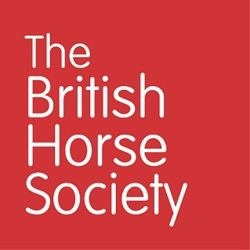Thrush usually starts in the frog clefts and can produce black smelly discharge. It can affect one hoof or all four at a time.

Signs
chevron-down
chevron-up
chevron-down
chevron-up
Common signs include:
- Smelly dark discharge from crevices such as the frog cleft
- Softening of the frog
-
Excess growth of frog tissue
-
Lameness in more severe cases.
The bacteria can also cause damage to the frog creating open sores in severe cases.

Credit: Nigel Brown AWCF
Cause
chevron-down
chevron-up
chevron-down
chevron-up
Thrush can be caused by a consistent exposure to environmental conditions, for example deep-litter, muddy or very wet pastures. If your horse’s hooves are not picked out daily, they’ll be more prone to developing thrush. Horses with deep frog clefts, imbalanced feet or poor hoof conformation are also much more likely to develop thrush. This is because the hoof can’t effectively use its self-cleaning system. The frog needs to be well balanced with the hoof plane to ‘push’ out any debris when in contact with the ground to self-clean successfully.
Treatment
chevron-down
chevron-up
chevron-down
chevron-up
If left untreated a thrush infection can progress and affect the deeper structures within the hoof. It’s important for the owner and farrier to work together in the first instance to help resolve the infection. In serious cases, contact your vet. A general treatment plan may include:
- The horse initially being removed from the muddy, wet conditions. Instead, they may need stabling on clean, dry bedding.
- The horse’s hooves should be picked out carefully twice daily before the frog and sole are scrubbed with an antibacterial solution such as dilute iodine (highly acidic solutions should be avoided as these may kill off healthy tissue as well as the thrush).
- Once washed the horse should be stood on a clean, dry area to allow the hoof to dry.
-
Any loose or dead frog tissue should be removed by the farrier or vet to allow air to reach the affected tissue.
-
Avoid treatments that coat or seal the sole and prevent air contact as the bacteria involved thrive in conditions with low oxygen levels.
-
Shoeing may be necessary if there is heel instability, foot imbalance or to improve air flow under the foot.
Seek further advice from your vet if the thrush does not respond to treatment, is causing lameness or the tissues are bleeding.

The arrows on the photograph are showing areas where the frog has started to become loose, creating crevices which bacteria harbour and cause thrush.
Prevention
chevron-down
chevron-up
chevron-down
chevron-up
Prevention is much better than cure and by following these simple steps you can help to prevent the underlying causes:
- Inspect your horse’s hooves and pick out daily. As a matter of good practice this should ideally be done twice a day.
- Avoid your horse standing in wet and muddy conditions for long periods —make sure they have somewhere dry to stand for at least part of the day.
-
Adopt good grassland management by rotating fields to reduce poaching and put hardcore down in places where horses gather, such as gateways and water troughs. Fence off any particularly muddy areas.
-
Maintain good stable hygiene with clean dry bedding and mucking out well.
- Regular trimming of hooves and frog by a farrier is important to maintain good hoof conformation and frog health.

Written in conjunction with Laura McGillycuddy BSc BVetMed MRCVS Cert AVP. Hampden Equine Veterinary Practice.

Get in touch –we’re here to help
The Horse Care and Welfare Team are here to help and can offer you further advice with any questions you may have. Contact us on 02476 840517* or email welfare@bhs.org.uk – You can also get in touch with us via our social media channels.
Opening times are 8:35 am - 5 pm from Monday – Thursday and 8:35 am - 3 pm on Friday.
*Calls may be recorded for monitoring purposes.
Opening times are 8:35 am - 5 pm from Monday – Thursday and 8:35 am - 3 pm on Friday.
*Calls may be recorded for monitoring purposes.


